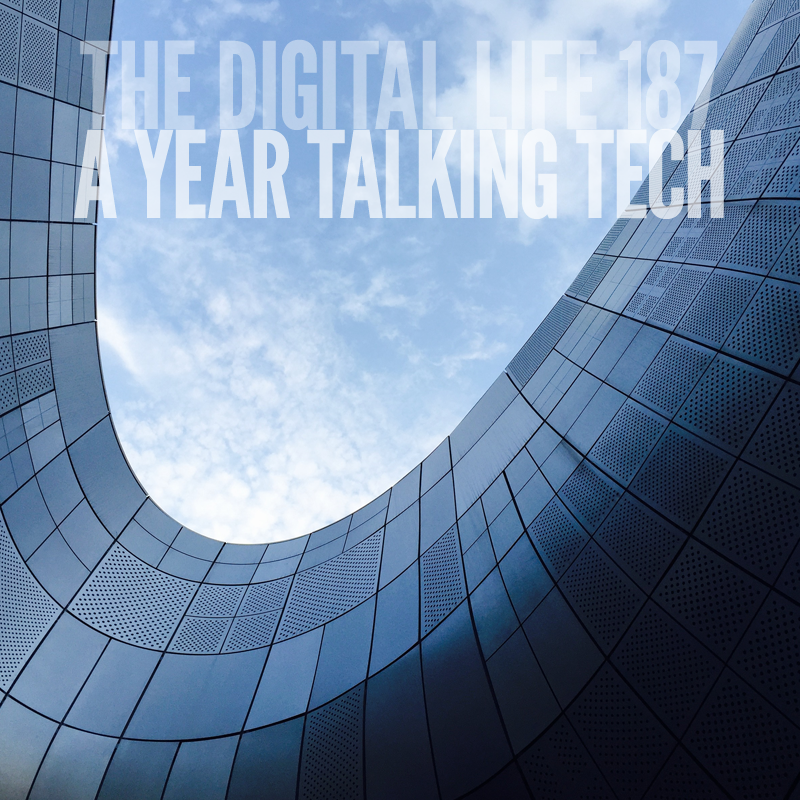Episode Summary
For our final podcast of 2016, we chat about the big themes on the show and our favorite episodes over the past year. We had conversations on design and tech with some wonderful guests including ground breaking geneticist George Church and open science advocate and researcher, John Wilbanks. From AI to genomics to cybersecurity, we covered a wide range topics on The Digital Life in 2016. So what did we learn from a year talking tech?
AI is too smart for its own good.
Artificial intelligence is evolving rapidly, with both high profile public failure and success by a number of tech giants this year. For instance, Microsoft had to terminate Tay, its teenage chatbot, after the bot started tweeting neo-Nazi propaganda and other abusive language at people. Meanwhile, Google's DeepMind created an AI capable of beating some of the very best human players in the world at Go, the Asian strategy board game. And, we were introduced to a brand new "Rembrandt", which was 3D-printed with eerie accuracy by an artificial intelligence algorithm, trained by analyzing the artist's paintings.
Episode 149: Artificial Intelligence 149: Artificial Intelligence
Episode 151: AI Goes to Art School 151: AI Goes to Art School
Episode 163: AI Goes to the Ballpark 163: AI Goes to the Ballpark
DNA replaces silicon as the new material for innovation.
The fields of genomics and synthetic biology continue to press forward in astonishing ways. In Seoul, Korea, a controversial lab revealed plans to clone endangered animals in order to save them from extinction. At the Massachusetts Institute of Technology (MIT) and Boston University (BU) synthetic biologists created software that automates the design of DNA circuits for living cells.
Episode 148: On Cloning
Episode 150: Engineering Synthetic Biology
Episode 154: DNA as Data Storage
Episode 158: Writing Human Code
Episode 168: The Microbiome168: The Microbiome
Episode 169: Genomics and Life Extension 169: Genomics and Life Extension
Episode 170: Chimeras and Bioethics 170: Chimeras and Bioethics
Episode 176: Three Parents and a Baby 176: Three Parents and a Baby
Hacking and cybersecurity are front and center as online and offline worlds collide.
In 2016, cybersecurity became a primary issue in a host of critical areas including communication, energy, and politics. Power grids, airports, and other infrastructure were increasingly subject to cyber attacks and an increasing number were successful. The debate over privacy and security was reinvigorated by the hubbub around the FBI request of Apple to unlock an iPhone owned by one of the San Bernardino shooters. And, Wikileaks distributed e-mails obtained by sources who hacked the DNC and individuals associated with the Clinton campaign during the U.S. presidential elections.
Episode 139: Hacking Power
Episode 144: Apple vs. FBI
Episode 166: Hacking the DNC
Episode 179: Internet Takedown
The automation of work is coming.
We got another startling look at what the future of work could become as software, robots, and the IoT continued to automate activities previously completed by humans. According to preliminary findings of a recent McKinsey report, 45 percent of all work activities could be automated today using technology already demonstrated. From fulfilling warehouse orders to suggesting medical treatments for ailments, the coming wave of automation will redefine jobs and business processes for factory workers and CEOs alike.
Episode 140: Automating Work 140: Automating Work
Episode 141: Future Transportation 141: Future Transportation
Episode 145: Robot World 145: Robot World
Episode 153: Smart Cities and Sidewalk Labs 153: Smart Cities and Sidewalk Labs
Episode 173: Labor and the Gig Economy 173: Labor and the Gig Economy
Design and science are intersecting in new and significant ways.
Whether it’s in the creation of high tech clothing, embeddables, or materials, design and science are coming together in new and significant ways. Clothing designers are working with multi-disciplinary teams, integrating input from engineers and synthetic biologists into their work. From 3D-printed couture to scarves dyed with bacteria to textiles grown in the lab, emerging tech is creating rapid innovation in the fashion industry. And this year, in the burgeoning world of designing embeddables, the U.S. Patent Office approved Google’s patent for electronic lens technology, which implantable directly in the eye. These mechanical eyes might give you superhuman abilities — to see at great distance or view microscopic material, and document it all by capturing photos or video.
Episode 143: Clothing and Technology
Episode 155: Designing Embeddables
Episode 161: The Future of UX
Episode 171: Embeddables
Episode 172: Quantum Computing

Subscribe to The Digital Life on iTunes and never miss an episode.